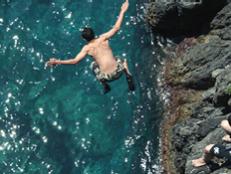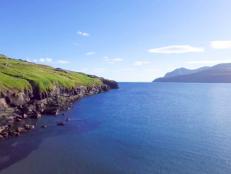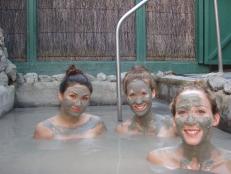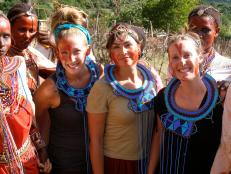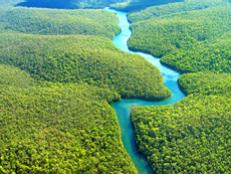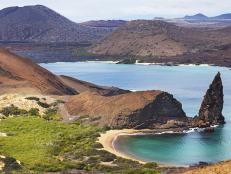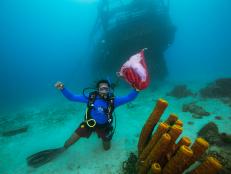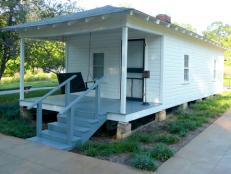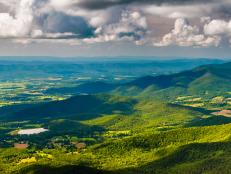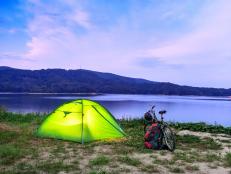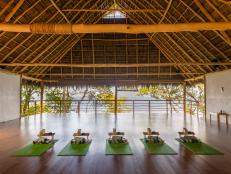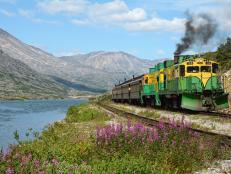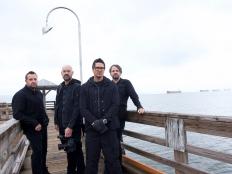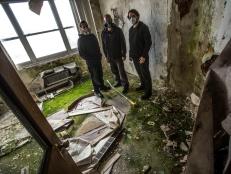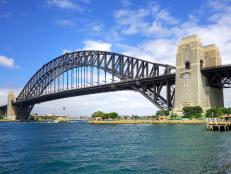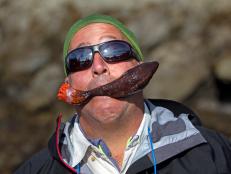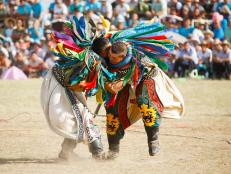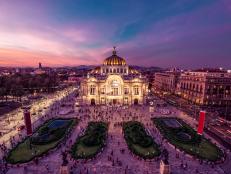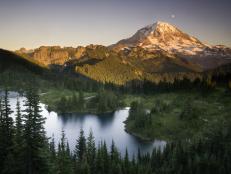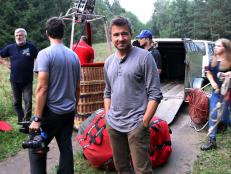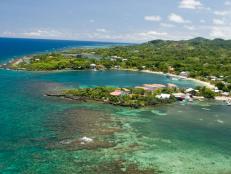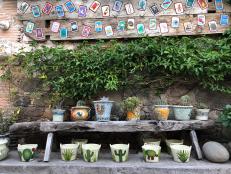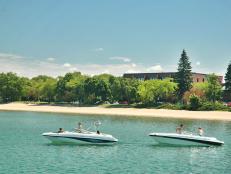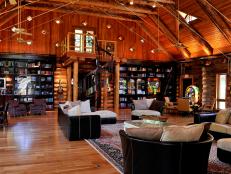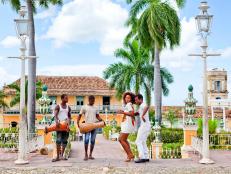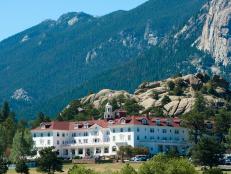Best of Nicaragua's Isla de Ometepe

In pre-Columbian Nicaragua, indigenous prophets had a vision of paradise, a place with 2 great hills. Their visions led them to Isla de Ometepe, an island featuring twin volcanoes, Maderas and Concepción, rising majestically from Lake Nicaragua -- the largest lake in Central America.
Those early prophets weren’t far off in their paradise prediction. The 19-mile-long island boasts a dense tropical topography teeming with waterfalls, natural springs and all manner of wildlife, from howling monkeys to delicate butterflies.
Today, Ometepe’s peaks are like thrill-seeking beacons, calling hikers and nature enthusiasts to the world’s largest island in a freshwater lake. But the island’s best features may be its warm, hospitable farming culture and its undiscovered feel -- so get here before more adventure seekers discover Ometepe’s intriguing, eco-friendly secrets.
Hiking Maderas and Concepcion
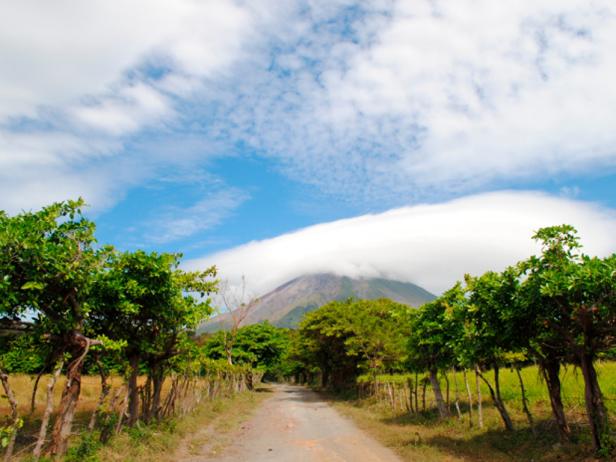
Thinkstock
These volcanoes, joined by a tiny isthmus, couldn't be more different. Maderas, at 4,500 feet tall, is long dormant, its crater replaced by a serene lagoon, while Concepción, measuring over 5,200 feet, is dry and sandy, still belching puffs of volcanic smoke. The Maderas hike is through lush, at times muddy, rainforest terrain, taking 6 to 7 hours up and back, while Conception takes 8 to 10 hours round-trip and offers some of the best views of the island and its neighboring volcano.
The best place to rest up and organize a trek up Maderas is from Hotel Villa Paraiso, which is less like a hotel and more like a homey lodge with modest cabins situated at the lake’s edge on Playa Santo Domingo, the laid-back beach bridging the volcanoes. The hotel offers organized hikes up the volcano and a scenic view of the challenge ahead from its thatched-roofed restaurant.
An early breakfast of eggs and gallo pinto, or beans and rice, at the hotel’s eco-conscious coffee farm provides the proper fuel for the sweat-popping haul up the volcano’s unrelentingly steep incline. A local guide offers welcome nature breaks to spy on native birds, listen to distant howler monkeys and get a panoramic view of Lake Nicaragua and Ometepe’s lush landscape during the hike’s halfway mark. Cap it all off with the thrill of making it down a vertical rock face into to the otherworldly crater at the top, followed by a cooling swim in its mist-covered lagoon.
Exploring Nicaragua's Prehistoric Past
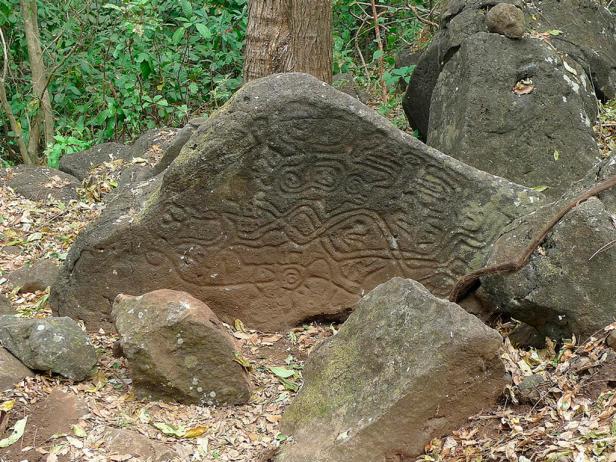
Beth and Anth, flickr
Ometepe means "2 hills" in the native Nahuatl language, and its sacred native ground is strewn with pre-Columbian petroglyphs, rock carvings resembling abstract spirals, turtles and lizards, dating as far back as 1000 B.C. You can almost stumble across these prehistoric markers anywhere on the island, on the way up Maderas and on surrounding farms like Finca El Porvenir and Finca Magdalena, which offer walking tours of the elaborately carved stones and the organic coffee farms themselves.
But if there were a ground zero for petroglyph prowling and pre-Columbian culture, Altagracia would be the place. In fact, the village, sitting on the northeastern slope of Concepción, was once the indigenous capital of the island and continues to maintain an authentic Ometepino lifestyle. El Museo Ometepe showcases the island’s pre-Columbian life with a nice collection of stone idols and petroglyphs. Large stone idols have been found at archeological sites just outside Altagracia as well.
If you are in town during the Fiestas Patronales, the festival dedicated to Altragracia’s patron saint San Diego, don’t miss the Baile de los Zompopos, or the dance of the leaf-cutter ants, where locals hold tree branches and leaves in a massive drum procession to retell the story of a massive ant invasion.
Waterfalls, Springs and Rivers
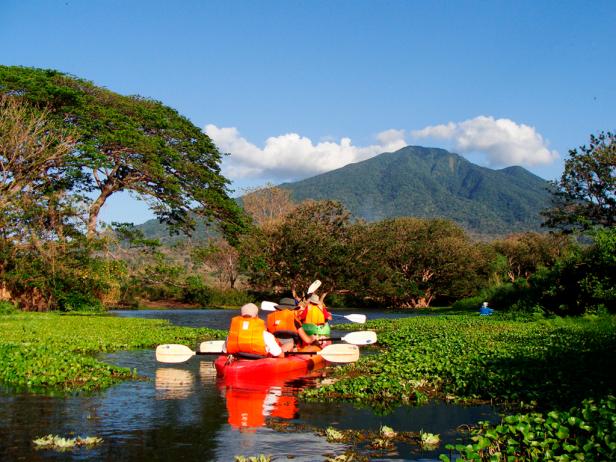
camiellems, flickr
A mere 3 miles from Altagracia lies El Ojo de Agua, or “The Eye of the Water,” a pair of natural spring water pools, shaded by leafy old trees. It’s the perfect place to take a relaxing dip and then drip dry in the warm sun. If you prefer to be on the water, head southeast along the isthmus to Merida and Hotel Caballito's Mar, the best place to kayak down Rio Istían for a different view of Maderas and Concepción, looming from either side of the river that hosts preening egrets, swooping herons and a lovely floating garden of greenery. You may even be lucky enough to spot a shy caiman, a tiny crocodilian creature native to the region.
Cooling natural pools and languid rivers represent the quieter nature of water on Ometepe, while the San Ramón Waterfall speaks to its fierce and powerful side. Consider a 3-hour hike from San Ramón, south of Merida, to the falls where you’ll be rewarded with a stunning 160-foot cascade shooting from the southern slope of Maderas.
